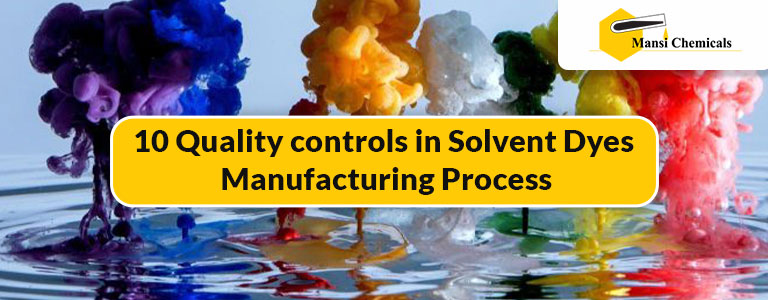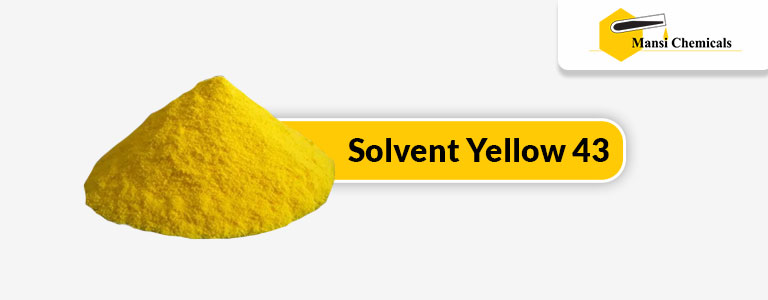As the demand for vibrant, durable, and versatile dyes escalates, solvent dyes manufacturers stand at the forefront of innovation and excellence. This article looks into the critical quality controls that shape the solvent dyes manufacturing process, ensuring that every pigment meets the highest standards of brilliance and reliability.
In-depth look into the Quality Control Processes in Solvent Dyes Manufacturing
Quality Control 1: Raw Material Inspection
Raw material inspection is the sentinel that guards the quality of solvent dyes right from their genesis. For Solvent Dyes Manufacturers, especially those in Ahmedabad, this step is sacrosanct. It begins with the meticulous selection and sourcing of high-quality ingredients, each playing a crucial role in determining the final dye’s hue, stability, and performance. Upon arrival, these raw materials undergo rigorous testing for purity, quality, and suitability. Parameters like moisture content, purity level, and potential contaminants are scrutinised. Sophisticated analytical methods such as spectrometry and chromatography might be employed to ensure that only the finest raw materials proceed to the next stages of manufacturing. This foundational scrutiny sets the stage for excellence.
Quality Control 2: Process Control and Monitoring
Once the raw materials pass the quality checks, they enter the intricate world of process control and monitoring. Here, precision is paramount. Manufacturers employ advanced control systems to regulate every aspect of the dye-making process. Parameters like temperature, pressure, pH levels, and reaction times are constantly monitored and adjusted. This vigilant oversight ensures that the chemical reactions proceed as intended, fostering consistency in quality and colour. Automated systems and sensors often provide real-time data, allowing for swift adjustments, ensuring the process stays on the desired course. This meticulous orchestration of conditions and reactions underpins the uniformity and reliability of the final product.
Quality Control 3: Colour Consistency
The heart of solvent dyes lies in their colour vibrancy and consistency. Achieving and maintaining the exact hue across different batches is a feat that requires scientific precision. Solvent Dyes manufacturers employ sophisticated colour measurement tools like spectrophotometers to evaluate the colour properties of dyes. These instruments measure the intensity and spectrum of light reflected or absorbed by the dye, ensuring that the colour meets the predefined standards. Colour matching is a critical part of this process, often involving complex algorithms to ensure that each batch of dye matches the desired shade precisely. This commitment to colour fidelity ensures that customers receive a product that is not just vibrant but consistently true to shade.
Quality Control 4: Solubility and Dispersion
Solvent dyes, by their very nature, need to dissolve seamlessly in various solvents. The quality control for solubility and dispersion is therefore crucial. Manufacturers conduct rigorous tests to assess how well the dyes dissolve and disperse in different mediums. These tests determine if the dye particles uniformly distribute without forming aggregates or precipitates. The goal is to ensure that the dyes integrate smoothly into the end applications, whether it’s for coatings, inks, or leather dyeing. Achieving optimal solubility and dispersion is pivotal for the dye’s performance, affecting everything from the ease of application to the consistency of the colour on the final product.
Quality Control 5: Lightfastness Testing
The resilience of solvent dyes to light exposure is a critical quality parameter, especially for applications where the dyed product is frequently exposed to sunlight. Lightfastness testing involves exposing the dyed samples to controlled light sources that simulate sunlight. This process accelerates the effects of light exposure, allowing manufacturers to evaluate how well the dye withstands fading or colour change over time. The dyes are rated based on their ability to retain their colour under prolonged light exposure. This testing is pivotal in ensuring that the dyes can maintain their vibrancy and hue integrity even in challenging environmental conditions, making them reliable choices for various applications.
Quality Control 6: Stability Testing
The stability of solvent dyes over time is a critical quality aspect. Stability testing involves subjecting the dyes to various environmental conditions, such as temperature fluctuations, humidity, and chemical exposures, to simulate long-term storage and usage scenarios. This process helps in identifying any potential degradation, precipitation, or colour changes that might occur over time. Manufacturers ensure that the dyes remain stable and perform consistently, maintaining their quality not just upon production but also during prolonged storage and use. Stability testing is essential for reassuring customers that the dyes they’re purchasing will be reliable and maintain their properties long-term.
Quality Control 7: Packaging Integrity
The packaging of solvent dyes plays a crucial role in preserving their quality. Packaging integrity tests are conducted to ensure that the containers are robust, airtight, and resistant to any chemical or environmental factors that could degrade the dyes. This includes checking for leakages, material compatibility, and the effectiveness of seals. Proper packaging is vital to protect the dyes from moisture, air, and other contaminants that could affect their performance. High standards of packaging integrity not only safeguard the dyes during transportation and storage but also enhance their shelf life and usability.
Quality Control 8: Purity Analysis
Purity is a non-negotiable aspect of quality for Solvent Dyes Manufacturers. Purity analysis involves rigorous testing to detect and quantify any impurities or unwanted by-products within the dyes. Techniques like gas chromatography and mass spectrometry might be utilised for this purpose. Ensuring high purity levels is crucial because even trace amounts of impurities can affect the dye’s performance, colour consistency, and safety. Purity analysis is a meticulous process that underscores the manufacturer’s commitment to delivering products that meet the highest standards of quality and safety.
Quality Control 9: Environmental Compliance Testing
For Solvent Dyes Manufacturers in Ahmedabad, adhering to environmental regulations is imperative. Environmental compliance testing ensures that the production and the dyes themselves comply with local and international environmental standards. This involves assessing the dyes for any hazardous substances and ensuring that their manufacturing, usage, and disposal do not harm the environment. Tests for biodegradability, eco-toxicity, and VOC (Volatile Organic Compound) emissions are often part of this process. Such compliance not only reflects the manufacturer’s responsibility towards the environment but also builds trust with environmentally conscious customers.
Quality Control 10: Customer Feedback and Continuous Improvement
Finally, one of the most vital quality control measures comes from customer feedback. Manufacturers actively seek and analyse feedback from their clients regarding the performance and quality of their dyes in various applications. This input is invaluable for identifying areas for improvement and innovation. Continuous improvement processes are implemented based on this feedback, ensuring that the solvent dyes not only meet current quality standards but are also evolving to meet future demands and expectations. This customer-centric approach plays a pivotal role in maintaining and enhancing the quality of solvent dyes over time.
Mansi Chemicals: Crafting Colours with Care
Harnessing over 30 years of experience and operating from a state-of-the-art production unit, Mansi Chemicals offers an array of spectacular dyes, from Meghapon Yellow 21 to Solvent Black 27. Each product echoes the company’s dedication to delivering international quality, backed by the proactive quality culture of the Meghmani group.
The company’s ethos of quality, consistency, and customer-centricity shines through its products, illuminating industries from coatings to leather dyeing. It stands as a testament to the art of manufacturing solvent dyes, where every colour tells a story of excellence.

